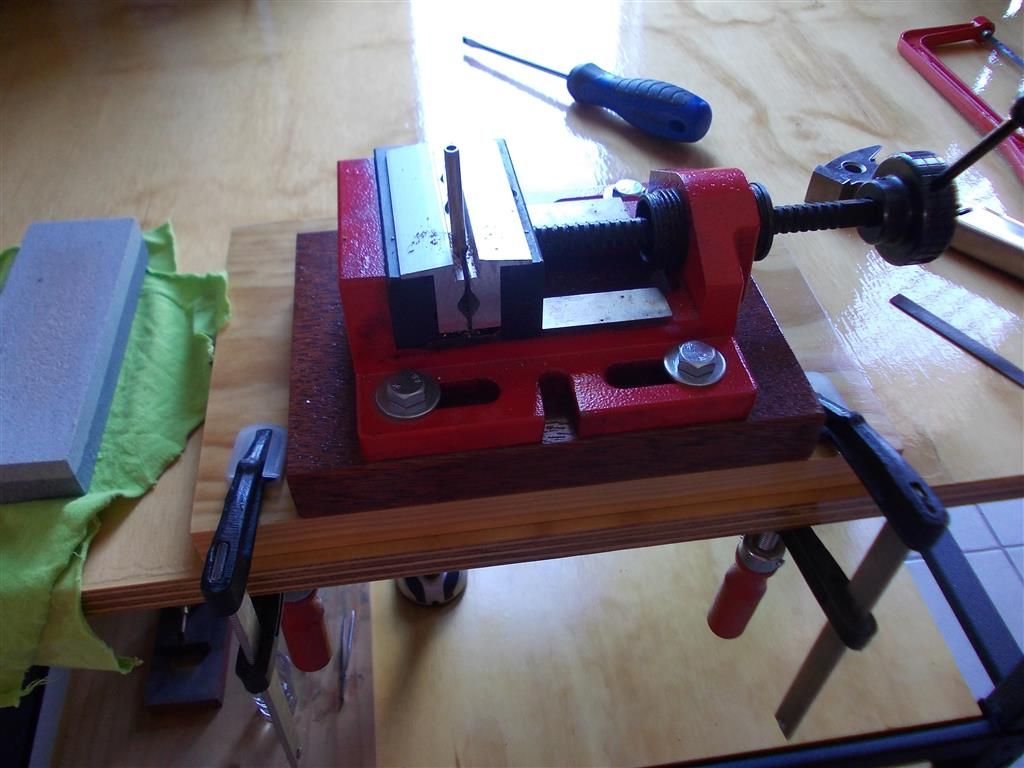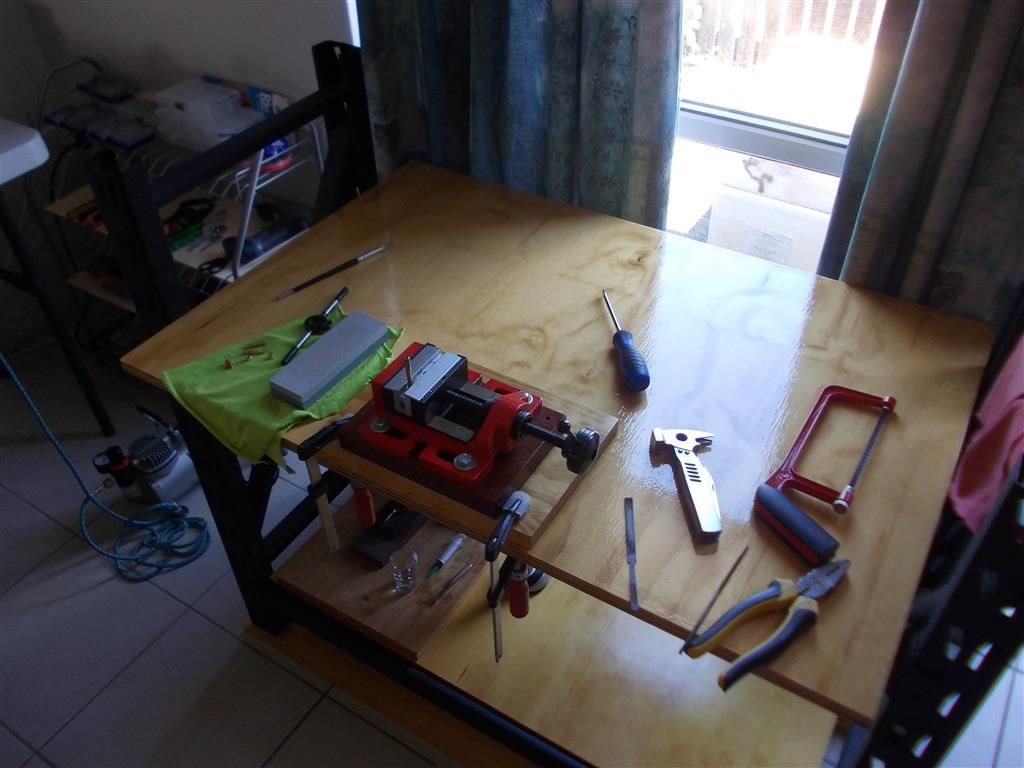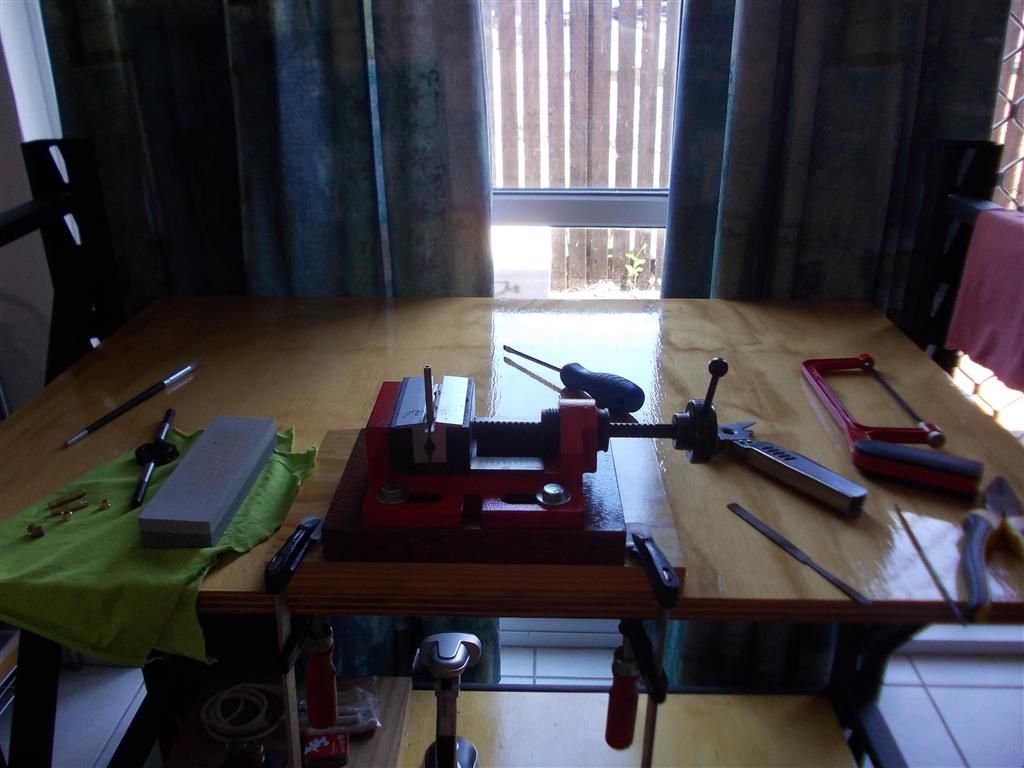Stuart No. 10V – their smallest engine, uses mostly 7BA screws and only one 5BA grubscrew. It uses 5/16x 26 tpi ( either CEI or BSB could be used) for the gland. The bigger 7A engine uses 4BA, 5BA and 7BA + the 5/16×26 for the gland. Bigger engines go up to 2BA with some 1/4BSF even. Stuart engine do not appear to be fitted with any 6BA size threads.
The screws supplied by Stuarts have a thick head. Some of the egines illuatrated in their catalogues – have studs and not screws. Making 3/8in long 7BA studs is a real problem, so screws are to be recommended.
If you want to go the metric way here are some close equivalents and remember a someone has stated – BA is a Metric system where each successive size is 9/10ths of the previous size. starting with OBA which is exactly 6mm witha 1mm pitch. Only the angle of 47 1/2deg. is different.
2BA 5mm (Pictch is identical)
4BA 3.5mm
5BA 3 mm
7BA 2.5mm
8BA 2 mm
The half sizes are obtainable from Tracy Tools OK. I have had one or two dicey dies from them in the past – actually unhardened, but they are very good and change them without question
To enhance scale appearance – screws are obtainable with head size one size less.
The 0, 1 and 3BA sizes are little used from a full set of BA taps and dies.
As a fair guide, the tapping drills for BA sizes can usually be used as clearance drills for 2 sizes below, which can save buying a few drills.
Sources of good steel for some small BA, UNF and metric studs are bicycle spokes, umbrella ribs, welding rods and wire coat hangers.
To cut out breakage of the small BA or Metric taps, never use the tap wrench provided in a set as it is to provide torque for the larger sizes. Use chuck type tap wrenches with short tommy bars. This allows you to feel when the tap is tightening up. I rarely use a taper tap on steam engines as they vary in taper from one manufacturer to another. These steam engines have a lot of blind holes to tap and a long taper tap wll bottom out and will not give a good start to the plug tap. I can usually manage with a second, but even these can vary in the amount of taper There is a lot of discussion about tapping and staking set-ups but they are only one more complicated time consumer to make. I always check the tap squareness by eye in two directions at right angles and check frequently until I am satisfied as to the trueness before completing the thread. I can usually get my threads quite square thsi way.
If you go for the Stuart steam engines try and obtain one of the old Stuart Turner kits on say Ebay as the casting quality is far superior to what they are now
Do not obtain the castings and parts as you go along or you will end up paying about twice the price of the kit. which includes the fixings. This is because Stuarts now charge £5 for a tiny piece of brass for the valve nut and corespondingly for the other bits of stock material.
Do not go for a full set of number drills for tapping sizes. 15 of the set do not have any use for tapping, clearance, reaming or interference fits. Buys as you go.
to
.
Edgar Vin 1.










